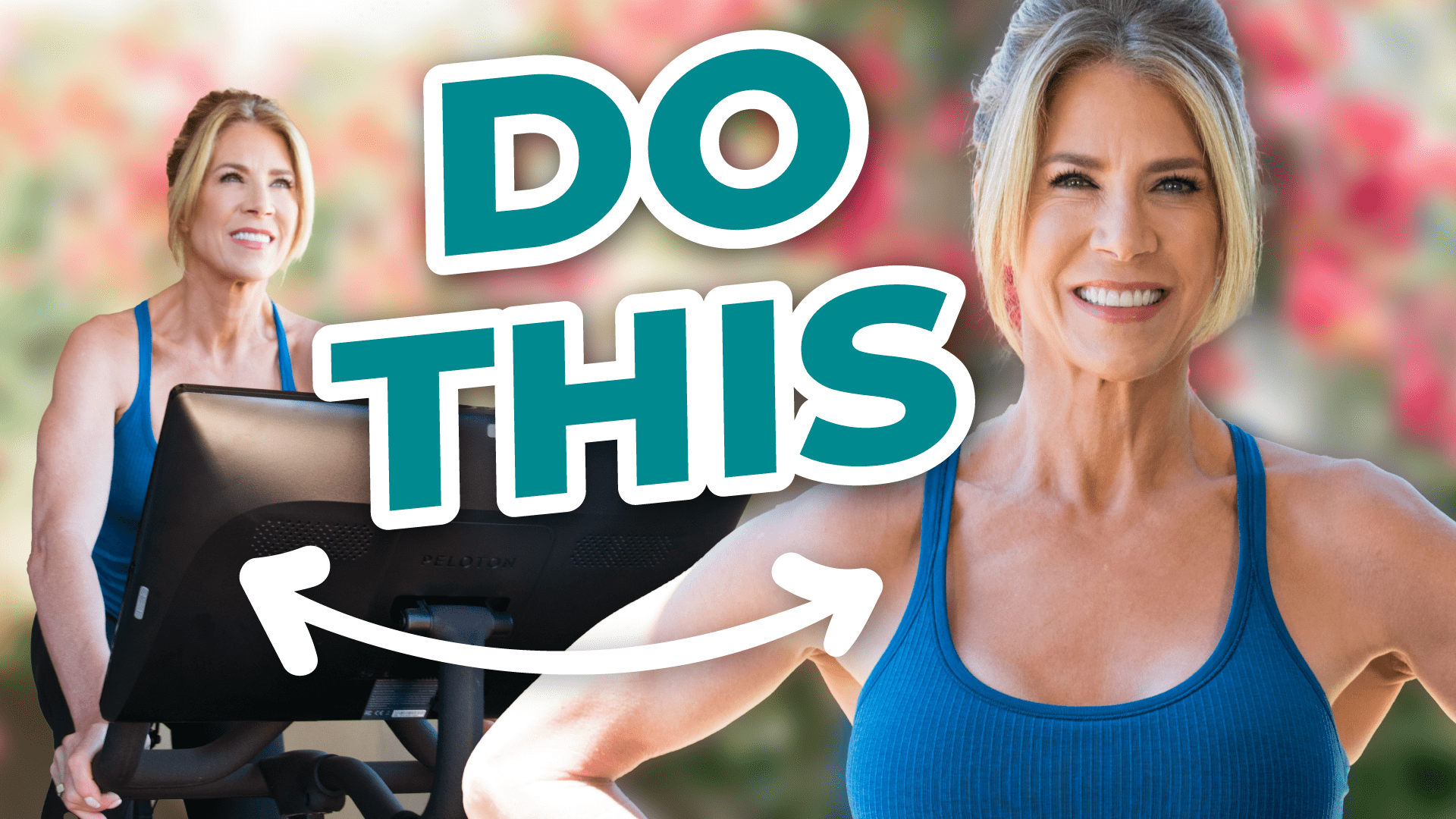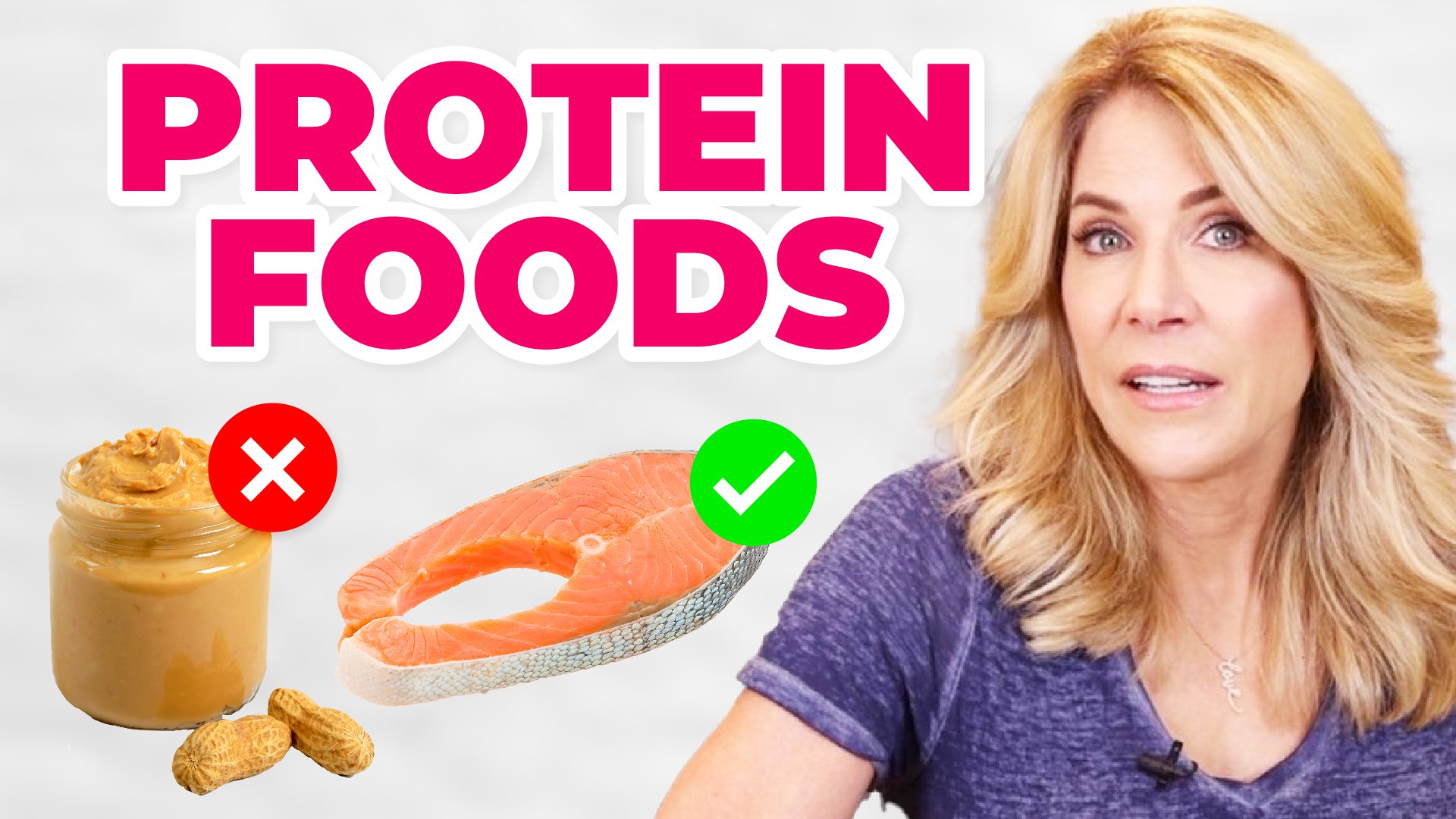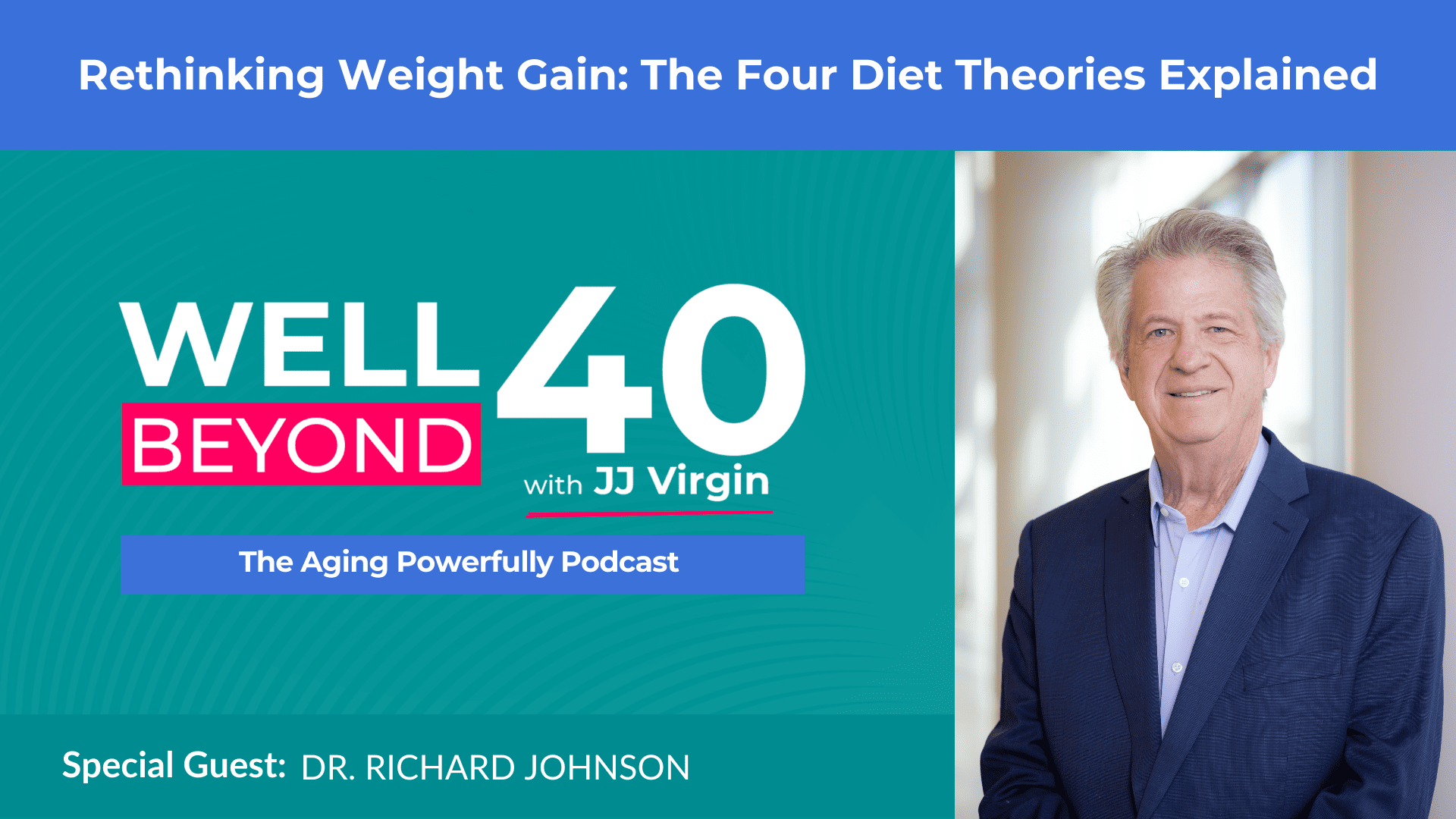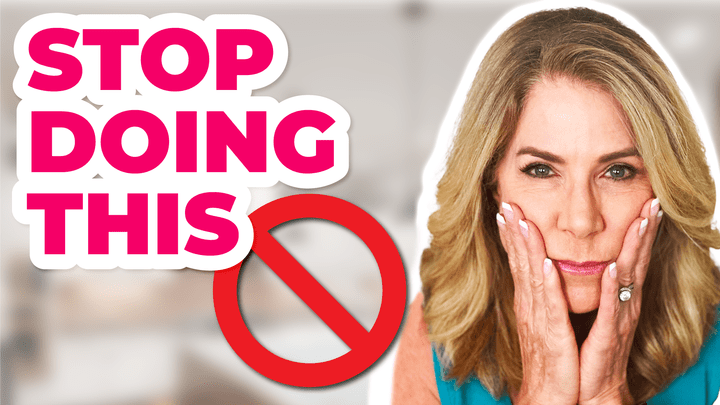The Exact Steps You Need to Gain Muscle
Have you noticed the workouts you were doing in your 20s and 30s that worked so well aren't working for you anymore? That it feels harder to stay in shape as you get older?
In this episode, I talk about the best ways for people over 40 to build muscle and burn fat. We discuss the importance of consistency, rest, and nutrition, and my recommendations for exactly what kind of workouts you should be doing and how often you need to do them. We also talk about why it’s so important to eat high-protein meals and get adequate rest.
Additionally, I give you specific pointers for increasing the intensity of your workouts gradually, not overtraining, and focusing on compound exercises to optimize results.
Turns out… you may be doing just the wrong exercise for your age, so stay tuned! I walk you through exactly what you need to do to switch up your routine to build muscle and lose body fat more efficiently in your 40s, 50s, and beyond!
Timestamps:
00:00:40 – Are you doing the right exercise for your age?
00:01:20 – The types of body fat and how to measure body composition
00:04:40 – What you need to focus on to burn fat after 40
00:05:15 – The three keys to putting on muscle
00:09:46 – What an average week of workouts looks like for me
00:11:02 – Why you need more protein as you age
00:12:40 – Supplements that support muscle building
15:30:00 – How sleep and recovery affect muscle strength
Mentioned in this episode:
Watch the FULL VIDEO on JJ’s Youtube Channel
Try Vitamin D Plus to optimize muscle strength.
I use Protein First Enzymes to help break down and utilize the protein I eat.
Reignite Wellness™ Clean Creatine Powder
Omega Plus will help combat chronic inflammation and increase skeletal muscle strength.
ATHE_Transcript_Ep 534_The Most Efficient Way to Build Muscle & Burn Fat Over 40
JJ Virgin: [00:00:00] Hey, this is JJ Virgin. Thanks so much for joining me. This is Ask the Health Expert. In each episode, I put the Power of Health in your hands and share ways to get healthy, lose weight, heal your gut detox, and lots more. So you can look and feel better fast if you'd rather watch the video. Hey, I did put on my makeup and do my hair, so check it out on my YouTube channel.
Have you noticed that the workouts you were doing in your twenties and thirties that worked so well aren't working for you anymore? Now if it feels harder to stay in shape as you're getting older? Turns out you may be doing just the wrong exercise for your age, so stay tuned. I'm gonna walk you through exactly what you need to do to switch up your routine to build muscle and burn fat [00:01:00] more efficiently in your forties, fifties, and beyond.
Now, notice I'm saying build muscle and lose fat. I'm not saying lose weight because here's the. . If you're 40 plus, you wanna make sure you're holding onto, or really better yet building muscle and that weight that you're losing, you really want it coming from fat. This is mission critical because starting at age 40, we start losing 1% of our muscle mass.
Every single year, and by the way, it doubles to 2% at age 60. Now, if you're still using a plain old bathroom scale, you gotta trash that thing and replace it with a bio-impedance scale and a tape measure. Your old bathroom scale is just a big. Fat fail. It only tells you how much you weigh and what you gotta know is what that weight is made up of.
A bio impedance scale can tell you how much your body is fat mass versus everything else. Basically fat free mass, but that is just the [00:02:00] tip of the iceberg. You're also going to be able to tell how much of that body fat is something called vat, visceral atip. Tissue. This is that deep internal fat that is the real troublemaker on your body.
And here's the thing, you always heard that thing, oh, can you pinch an inch? The deal with that fat is you can't pinch it cuz it's all the way inside. And the goal with that fat is to have it be as low as possible, like 10% of your total body fat. or less and less is best. Now if you weigh 150 pounds and you have 20% body fat or 30 pounds of fat, that means how much?
Let's do quick math. Three pounds or less of visceral fat, and then we have your fat free mass. And the other thing you really wanna know is how much of your fat free mass. Is skeletal muscle. Your fat-free mass is gonna be the, the circulation system, things that support your muscles, and then the things that you can and your organs of course, and then what you can change skeletal muscle.
[00:03:00] This is what we can improve, and it's so important to make sure that you are holding onto and building skeletal muscle again. You heard how you're losing it. because skeletal muscles like metabolic spanks, it holds everything in tighter and requires more energy to be on your body. They're reliable. If it's under the same conditions, they're not gonna get you as close as a DEXA scan, but they're going to get you close.
So here's what you do. One or two times a year, you go and get a DEXA scan. You can do that at your local health club. You can do it at a doctor's office. DEXA scans in the past were what we used to find out your bone marrow density, but it turns out you can do a whole lot more with the DEXA scan. First of all, you can find out what's going on with your VAT fat, right?
So you'll find out your total body fat, but then you'll find out where that fat is and specifically if you've got the dangerous that fat. , you'll also be able to look at your skeletal muscle. And what's super cool about that is you will be able to say, Hey, are my arms even? Maybe I've got, like my right arm has got way more muscle than my left, and we need to get you balanced out to avoid an injury.
Same with your legs. [00:04:00] So you'll be able to look at your skeletal muscle and you'll see if you need more. And then you'll also be able to get a projected or predicted basal metabolic rate from that cause that's based on your mass and really your skeletal muscle mass. So once you have those numbers, then at home you can use your home bio impedance scale, right, and a tape measure, and you'll be able to track from there.
This is the best way I know to really look at that visceral adipose tissue is monitor your waist. You gotta measure your body composition. You've gotta be able to see what's going on with your body because this is the only way we're gonna know if things are working for you here or not, in terms of being able to hold on and build muscle mass.
If you wanna burn fat after 40, focus on building muscle first. Muscle holds everything in tighter. And muscle supports a better metabolism. In order for muscle to stay on your body, it has to go through something called muscle protein synthesis. Basically, it's breaking [00:05:00] down and rebuilding just like your bones are.
You just wanna make sure, just like with your bones, that you're actually rebuilding as much or better yet more than you're breaking down. You need some energy to. Well then how do I put on muscle? So there are three parts to putting on muscle, and this is gonna be so easy for you to remember. Here they are.
Eat protein first. Lift heavy weights, repeatedly sleep like a baby. Now I'm gonna start with the work part. And I love this part because lifting weights is, is so visual. Like you go into the gym and you say, okay, I'm gonna start with 10 pound dumbbells, and I'm doing maybe my overhead presses, and then I go, wow, I can do 15 pounds.
So you can really see the progress as you go, which is. Fun, right, to get stronger. So the way that I look at your body is divide it into four different areas. And when I'm teaching you how to do these [00:06:00] things, what I want you to focus on are compound movements. What do I mean by that? Quite often people will go, I would just like to have better arms, so I'm just gonna do bicep curls and tricep extensions.
But look at this bicep curl. The bicep really crosses two. So maybe we do here, here, right? The tricep two joints. But if I did instead a dip where I'm working through a lot of different joints or I do a. Pull up. I'm getting compound movements, more muscles involved. So that's one of the things I want you to look at is how can I do bigger multi-joint exercises?
Because bigger means more calorie burn. And then I could either use free weights, I could use a T R X trainer. This is the best thing I've found for home. I could use my body weight. Bands, kettlebells. There's lots of options out there. So here's the way I've divided the body. There's upper body pushing.
Those are things like pushups, and if you're listening and going, I [00:07:00] can't do a pushup, yes you can. Cuz you could do a pushup starting against a wall, then you could do it against a counter. Then you could do it on your knees, on the floor. Then you can. Full. And here's the thing, exercise should be overloading like this.
One important principle here is that you've gotta do something harder than what you're used to, over and over and over. So your body goes, whew, and has to adapt to it. You're putting a little stress on your body and your body's adapting and getting stronger. So again, pushups, overhead presses, bench presses are all examples of upper body.
Next up. Okay. You said you couldn't do a pushup, so now you're really gonna flip out on me because there's upper body pulling. That's things like pullups. and yes, I I, right now I'm doing like four pull-ups at a time. They are super hard. So this is where you can have someone assist you or at the gym they have those assisted pull-up machines.
Those are awesome upright rows where I'm pulling something [00:08:00] up, right? Just like when you look at a push-up, what am I doing? I'm pushing something closed. I'm pushing things away. So I'm pushing myself out of the chair. So pulling. Multi-joint exercises, wall squat, maybe you'll do a ball squat, maybe you'll do a leg press.
So just think of things that are big quad
and glute movements like step ups and squats and lunges. You can do some great assisted ones with the TRX big things like that. And then power Core. And I gotta tell you, if you're doing all the other ones correctly, like a pushup, like a bent over row, guess what you're.
Your core too. Same with squats. So a lot of my Power Core just gets involved in my big exercise movements. Now, you're gonna wanna hit each body part at least twice a week, and what they're finding is really to get fit and to add that muscle on. two times a week can really do it. If someone's really wanting to get more, I put 'em into three. Then I'm gonna
share with you two different ways. I've been doing it lately. I'm constantly trying to mix this [00:09:00] up, and one of the challenges is, is that the longer you've been working out and the better shape you are, the harder it is to get to that next level. So you gotta keep changing it around. And one of the most important ways to build muscle, is to push to near failure, near fatigue.
And then I couple that with something called zone two training. So zone two is just this nice cardio training. It could be a brisk walk, it could be getting on the bike, it could be the StairMaster, but it's just where you can keep up a conversation. They'll call it being in your fat burning zone or your steady state zone you're in like.
50 to 70% of your max. All right, so let me just walk you through what an average week is for me of working out. Monday I meditate, do my cold plunge, warm up a bit, then go to the gym. On Tuesday, I do my meditation. I'll do my hit zone tune, and then I'll do my cold plunge. Wednesday I've been doing hot yoga.
If [00:10:00] it, in my perfect world, I do hot yoga, and later in the day I would do a little hit and zone two. But sometimes it just ends up being a. Thursday, I go back to the gym. Friday I do hip plus zone two. Saturday I go back to the gym. Here's the thing, I'll tell you, my default's always going to the gym. I prefer it's like more fun.
And then Sunday is our like major hot yoga class, like. It's 75 minutes of me watching the clock going, is it over yet? Is it over yet? The best thing about workouts is how great you feel afterwards and how you can then see on the bio impedance scale all the progress that you're making. It's so cool, and I would love to hear right now like, what are you doing for your workout?
And now that you have heard this, What are you going to put in or change what needs to happen next? What about feeding them? Because you gotta give your muscles what they need in order for them to be able to go through muscle protein synthesis and grow, right? And so part of that is the stimulus from exercise.
Another part [00:11:00] is what you're eating. And I say protein first as we age. We do not need less protein. No, we need more protein due to something. Anabolic resistance. This means as we age, our body is not as good at going through muscle protein synthesis and using dietary protein to build muscle. We've gotta push past that.
And so how much protein we're eating is key critical. Also, key critical here is how you're eating it. Cuz you go, okay, I'm 120 pounds, I'm gonna get 0.8, so I'm getting 90 grams. I'll just have that, I'll eat one meal a day and I'll get. That ain't gonna cut it because our body can only assimilate so much protein at one time.
And boy, I have been digging through the research to find out what that magic number is. And the, the answer is, it depends. Let's say that I found out that my body could only really utilize 40 grams of that. What would happen to the other 10 grams? They would go for fuel. So we're using this now to feed your muscles to help with all the things that [00:12:00] protein does.
Muscle, bone, hair, skin, nails, making hormones your immune system. But beyond that, it can be used for fuel too. So it's not just, you know, it's not just poof going into the air. So don't worry about that. One of the things that you're really looking for when you're eating protein, this is where you want really quality protein.
This is where clean animal protein's going to kick butt is you're getting branch chain amino acids and especially something called leucine in your branch chain amino acids in your protein because it does something it, it triggers mTOR, which activates all these anabolic hormones, which helps you go through muscle protein synthesis.
One of the other things that I've been doing here is playing around with some different supplements that can help, and I talked a little bit about collagen. I've been doing my all in one shake, and then I've been. Big heaping scoop of collagen in there as well. And then the other thing that I've added in is creatine monohydrate.
And I am getting very, very keen on the fact that everyone, I think 40 plus, should be using [00:13:00] creatine monohydrate. Here's why. About 95% of creatine is stored in skeletal muscle, and it's used to generate, , the body's energy currency, atp. And so what happens when you supplement with creatine is that it can help promote ATP production in the muscles.
What does that. More energy when you're working out and we know that not only is it gonna give you more energy, it can help with performance, it can help with stamina, it can also help with recovery. So why does this matter when you're 40 plus? Well, it turns out like everything else seems to be doing, creatine levels, decline with aging.
The other thing that you've heard me talk about this, if you've been watching any of the videos, is that, you know, I'm very, very keen on digestive enzymes, specifically protein digestive enzymes, because like, let's just take young adults, 51% of their dietary protein that they eat ends up in the blood following all the digestion and absorption.
but for older adults it's only 45%. [00:14:00] So as we age, we have less protein that we intake available for muscle protein synthesis. So, and it's not dramatic, but every little bit counts. Right? And remember, we also have a higher rate of protein breakdown. , right? And we have more trouble utilizing protein. Think again about the anabolic resistance, and one of the reasons that we have more trouble utilizing protein is because we have
lower production of digestive enzymes. So one of the key things that we want to do here is add a digestive enzyme and do a trial of this. And one of the things I really look at for digestive enzymes is betaine hcl, because this is a key protein digestive enzyme, I will always work vitamin D into the conversation.
Now, you know, if you're doing D3 that you also wanna take K1&2 but it turns out that vitamin D. Is also important for having normal skeletal muscle development and for optimizing muscle strength [00:15:00] and performance. And finally, omega-3 S, when you're doing a heavy workout, you're gonna have some acute inflammation and you actually want that.
That's important. What you don't want is chronic inflammation, because chronic inflammation actually blocks muscle protein synthesis. So they did a six month trial of fish oil supplementation. and what they found is it could modestly increase skeletal muscle strength in healthy, older people. Hey, I again, I'll take every single advantage that I can.
Okay, now, finally, and sleep like a baby. Well, not really sleep like a baby, but I want you to prioritize sleep first of all. , you wanna make sure that you're actually taking recovery days too. You're not just working out as hard as you possibly can every single day, because when you're exercising what's happening, you're actually breaking down a little bit and then you build up.
And what do we know That recovery is just as important as the actual workout, and that good sleep quality is actually associated with greater muscle strength. And in fact, the opposite's true [00:16:00] too. That short sleep duration may be a risk factor for decreased muscle strength. What's that mean to you? Seven to nine hours of quality sleep every night.
And if you are not getting it, then listen to my videos. Go watch my podcast on how to get a good night's sleep cuz I talk about this all the time. And one thing that you can use that I use every single night is my sleep candy. And this is important because it's got melatonin and there was a study that showed that supplemental melatonin is useful as an antioxidant and an anti-inflammatory nutrient for prolonging muscle.
And performance, so it's not just for sleep. You have the secret to activating your fat switch and remember what you measure and monitor, you can improve. and be sure to listen to your body as you work up to this. Because you know, you might go, I'm supposed to go to the gym and hit it hard day, and you're like, but I'm exhausted.
Like, listen to your body, right? Every workout's not gonna be your biggest workout and some workouts you might blow your [00:17:00] mind at what you can accomplish. So make sure you feel good exercise. You should come out of it and go, whew. But you should generally have more energy throughout the day because of it.
If you're wondering, oh, I don't know, maybe I'm pushing myself a little too. Watch this next video. It's gonna show you how you can determine if you're pushing yourself a little too hard and how to recover smartly, so you're getting the best results.
For more info on this and other health topics I cover, or to rate and review, find me on Instagram, Facebook, and my website jjvirgin.com, and don't forget to subscribe to my show so you won't miss a single episode. Go to subscribetojj.com. Thanks again for being with me this week.

 Subscribe to our show
Subscribe to our show 



